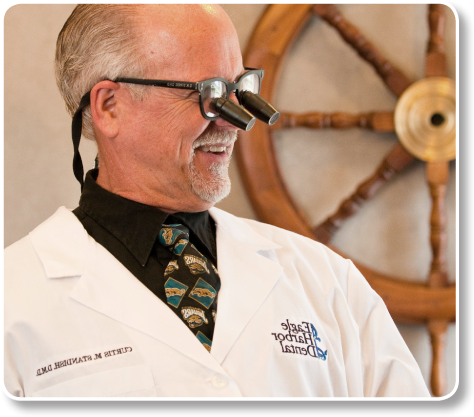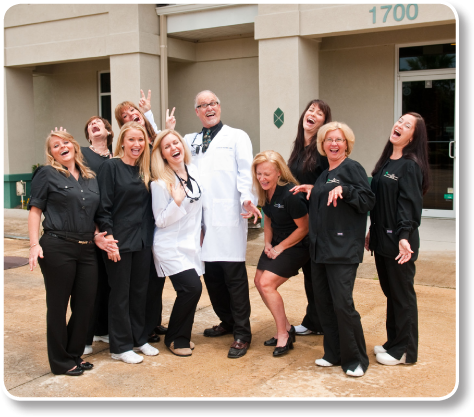Invisalign vs. Direct-to-Consumer: Which Is Right For You?
Nov 9, 2021

Convenience has motivated many to consider purchasing a direct-to-consumer teeth aligner as an alternative to Invisalign. Because Invisalign is directed by a dentist and requires you to go to in-person appointments it can be seen as a hassle. But, while direct-to-consumer aligners may be easier they don’t wield the best results.
Here’s what you need to know before you pick a direct-to-consumer aligner over Invisalign.
The Rising Popularity of Direct to Consumer Concepts—And Its Problems
Direct-to-consumer aligners include brands like Smile Direct Club and Candid. These companies promise a straighter smile at an affordable rate.
How to Processes Differ
While the general goal of both Invisalign and direct-to-consumer aligners are the same, the processes aren’t at all identical. This is what you can expect depending on the type of aligner you go with.
Invisalign Process
The Invisalign process begins will impressions of the upper and lower teeth. These are used to make a 3-D model. Intraoral scanners can be used as well to create a mold digitally. X-rays will then be taken to help your dentist determine the root shape and bone structure. This will aid in proper planning for the straightening of your teeth.
From there aligner trays will be made to begin moving the teeth to the desired position. Unlike with direct-to-consumer options, at this point, the dentist can use attachments or buttons on the teeth. These buttons aid in holding the Invisalign trays in place and applying force to move the teeth for better results.
From there, you’ll return to your dentist on a four to six-week cycle for an exam and adjustments as needed.
Direct to Consumer Process
This process for a direct-to-consumer process includes using a kit to make your own impressions at home. If you go with Smile Direct Club, you may have a chance to go to their retail location if one is nearby. The retail locations will have a technician take a digital imprint.
From there you will need to take pictures of your teeth (not x-rays) and send them to the company. A dentist will then develop your plan. However, it should be noted that you will have minimal to no interaction with the dental directing your plan.
You will receive your trays in the mail and every 90 days progress will be monitored.
Concerns With Direct to Consumer Options
Direct-to-consumer smile aligners may offer convenience but come with a number of concerns.
More Likely to Have Consequences
Because direct-to-consumer aligners aren’t directed by a dentist who physically examines you, it is more likely for consequences to develop. While your teeth may straighten in one area, a problem could arise in another spot of the mouth.
It is important to have a dental professional with specialized training in Invisalign directly monitor and adjust your treatment process. Slight changes to one area of the mouth can result in major problems in another spot if the proper planning isn’t completed. X-rays that can only be taken in a dental office help with this planning process to access any potential impact that will take place when moving teeth.
Additional Gaps Could Be Created
Similar to other consequences, closing a gap in one area of the teeth may open up a gap in another location of the mouth. Due to the process for direct-to-consumer aligners, you may experience straightening in one area but walk away with more gaps than you started with.
Limitation on Number of Trays
A direct-to-consumer company may place a limit on the number of trays you can have made. Going to a dentist in-person for Invisalign allows you to have as many trays needed to straighten your teeth as is necessary.
There are More Limitations
With direct-to-consumer aligners, the entire physical process of making the molds and learning to wear them is left to you, the consumer. The dental professional in charge of your case is working remotely and with minimal contact. There is no first-hand exam or x-rays, plus composite attachments are not available. These limitations lead to results that are not quite up to par with Invisalign through your dentist.
The Benefits of Invisalign Through Your Dentist
When you go with Invisalign through your dentist you’ll have access to expert guidance throughout the entire process. This results in a process that is completely customized to your needs. Going to see a dentist in person allows more complicated cases to be treated with the expertise you can’t find through a direct-to-consumer brand.
Invisalign offers you an unlimited number of trays and can utilize the use of buttons if necessary to get the best results for your smile.
FAQ
Is Invisalign better than competitors?
Glaucoma can’t be prevented. However, if it’s caught in its early stages, damage to the eye may be prevented or slowed. For this reason, it’s vital to make regular appointments with your eye doctor. Several types of glaucoma don’t have any symptoms early on and can cause a lot of damage before it’s detected. Keeping up with your eye appointments can help to identify the problem before it can cause too much damage.
What are the first signs that glaucoma is developing?
Invisalign offers better performance for simple and complex cases. A dentist with specialized training is able to give you an in-person exam and fit you with completely custom aligners. This results in a better performance than competitors.
Is Invisalign actually cheaper?
Invisalign may present as costing more than direct-to-consumer brands but Invisalign offers better long-term results. You will get better results from Invisalign which means you will end up saving money through fewer corrective measures down the road.
How much do you pay a month for Invisalign?
The cost of Invisalign will depend on your individual dentist and your unique case. The Consumer Guide for Dentistry suggests that the national average at the time of writing is $3,000 to $5,000. This is not a set number and will fluctuate depending on your situation. More complex cases will drive up the cost of Invisalign.
Ready for a Straighter Smile?
We can help!
(904) 269-6558
or
Fill Form To Schedule Your Appointment
For informational purposes only.












